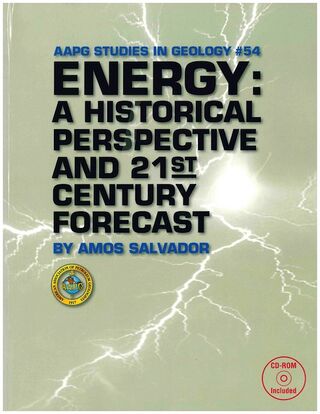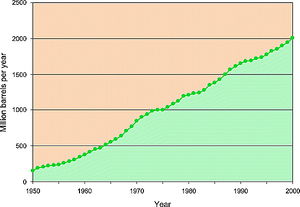Natural-gas liquids
| Energy: A Historical Perspective and 21st Century Forecast | |

| |
| Series | Studies in Geology |
|---|---|
| Chapter | Sources of Energy |
| Author | Dr. Amos Salvador |
| Link | Web page |
| PDF file (requires access) | |
Natural-gas liquids (NGL) are hydrocarbons that exist as gas in the reservoir but become liquid at surface pressure and temperature conditions. They are the liquid content of natural gas that is recovered separately at the surface in lease separators and field facilities or in natural-gas processing plants. The liquids recovered at the well or at small gas-oil separators in the field are called lease condensate (the liquids recovered at natural-gas wells or at small gas/oil separators in the field; also called field condensate) and consist primarily of pentanes and heavier hydrocarbons. Those obtained from processing natural gas at natural-gas processing plants are called natural-gas plant liquids or liquefied petroleum gasses and consist primarily of ethane, propate, butane, and isobutane.
The content of NGL of natural gas varies widely from essentially none in dry gas to more than 200 bbl of NGL per mmcf (million cubic feet) of gas in rich wet gas.
Figures for the world's production of NGL are not consistently reported and are, therefore, not easy to obtain. The total amounts of NGL, or of the lease condensate production, or both, are commonly reported as part of the crude oil production, and while production volumes of natural-gas plant liquids are sometimes reported, separate figures for lease condensate production can seldom be obtained.

Because of the difficulty for obtaining figures for NGL production, the volumes of the world's total NGL production shown in Figure 1 had to be estimated, assuming an average liquids-to-gas ratio of 22.5 bbl of NGL per mmcf of gas. In the United States, where better information is available, the average NGL yield of natural gas is higher: 35-40 bbl per mmcf. The ratio, of course, varies from petroleum field to petroleum field and from country to country, and the overall world average can only be calculated based on reliable statistics for gas and NGL, statistics that are not always readily available.
As natural-gas production has increased at a faster rate than oil production since about 1970, the percentage of total petroleum liquids represented by NGL has increased steadily from about 4% in 1970 to about 9% in 1995. In the United States, the percentage of the total petroleum liquids represented by NGL has ranged in the 1980s and 1990s between 15 and 20%. As the world's crude oil production continues to increase at a slow rate and eventually begins to decrease, and as natural-gas production continues to increase at a much faster rate, the share of the total petroleum liquids represented by NGL will continue to increase.
See also[edit]
References[edit]
- ↑ Salvador, A., 2005, Energy-A historical perspective and 21st century forecast: AAPG Studies in Geology 54, 208 p.